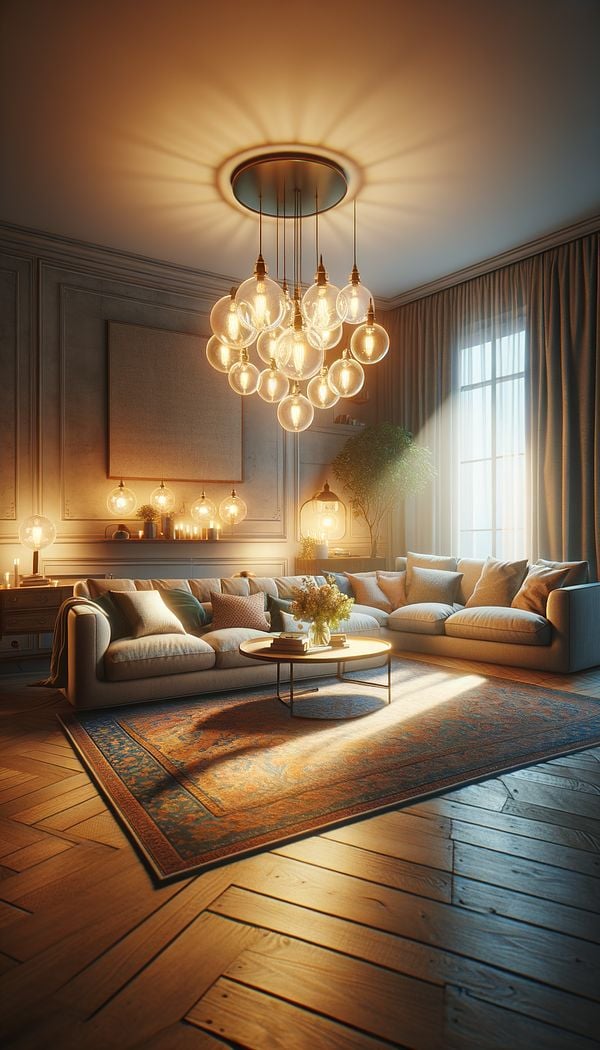What is Incandescent?
Incandescent refers to a type of lighting that produces light through the heating of a filament.
Description
In the world of interior design, incandescent lighting plays a pivotal role in creating ambiance and setting the mood of a space. At its core, incandescent lighting revolves around the concept of passing electrical current through a filament, usually made of tungsten, within a vacuum or inert gas-filled bulb. This process heats the filament to a point where it glows, thereby producing light. The warmth of the glow, typically in the yellow-orange range, is renowned for its ability to render colors with great fidelity and for providing a cozy and inviting atmosphere.
Incandescent bulbs offer a continuous spectrum of light, which is one of the reasons they are so valued in interior design. This characteristic makes them excellent for spaces where the accurate representation of colors is critical, such as living rooms, dining areas, and art galleries. Moreover, their dimming capability allows for adjustable lighting levels, further enhancing the mood-setting potential of a room.
However, despite their advantages, incandescents have their drawbacks, primarily in terms of energy efficiency and longevity. Compared to modern LED or fluorescent lighting, incandescent bulbs consume more energy and have a shorter lifespan. This has led to a decrease in their popularity but has not entirely phased them out, especially in applications where the quality of light is paramount over energy considerations.
Transitioning from incandescent to more energy-efficient lighting options is a trend in sustainable interior design. Still, the unique warmth and color-rendering properties of incandescents keep them in play for specific design needs.
Usage
Incandescent lighting is frequently used in settings requiring a warm, inviting glow. This includes living rooms, where a cozy atmosphere is desired, dining areas for intimate dinners, and art galleries where accurate color rendition is key. Despite their reduced efficiency, incandescent bulbs remain cherished for their unparalleled light quality and dimmability.
FAQs
-
What makes incandescent lighting unique compared to LED and fluorescent lighting?
Incandescent lighting is unique because it produces a continuous spectrum of light that accurately renders colors and creates a warm, inviting atmosphere. This contrasts with the more energy-efficient LED and fluorescent lighting, which may not render colors as faithfully or offer the same warmth.
-
Are incandescent bulbs still used in modern interior design?
Yes, incandescent bulbs are still used in modern interior design, especially in scenarios where the quality of light and color accuracy are prioritized over energy efficiency. Their ability to create a warm atmosphere and faithfully render colors keeps them relevant.
-
Can incandescent lighting be energy efficient?
While incandescent bulbs are inherently less energy-efficient than LED or fluorescent options, there are ways to use them more efficiently, such as by utilizing dimmer switches to adjust lighting levels or choosing higher-efficiency versions of incandescent bulbs.
Practical Application
When choosing incandescent lighting for a space, consider the ambiance you wish to create. Use higher wattage bulbs for bright, vibrant settings or lower wattage bulbs for cozy, intimate atmospheres. Remember that while incandescent lighting brings warmth and accurate color rendition to a space, it's also important to balance this with overall energy consumption. Consider incorporating efficient lighting alternatives or dimming capabilities to enhance sustainability.
-
AlcoveAn alcove is a recessed area in a room, often used for additional space or styling.
-
Direct LightingDirect lighting refers to a lighting solution where the majority of light is directed downwards towards a specific area or task.
-
Goose-Neck ArmA goose-neck arm is a curved, flexible support or attachment often found in lamps and furniture.
-
Three-Way SwitchA three-way switch is a type of light switch that allows you to control a light from two different locations.
-
Ambient LightingAmbient lighting is the base layer of light in a space that provides overall illumination.
